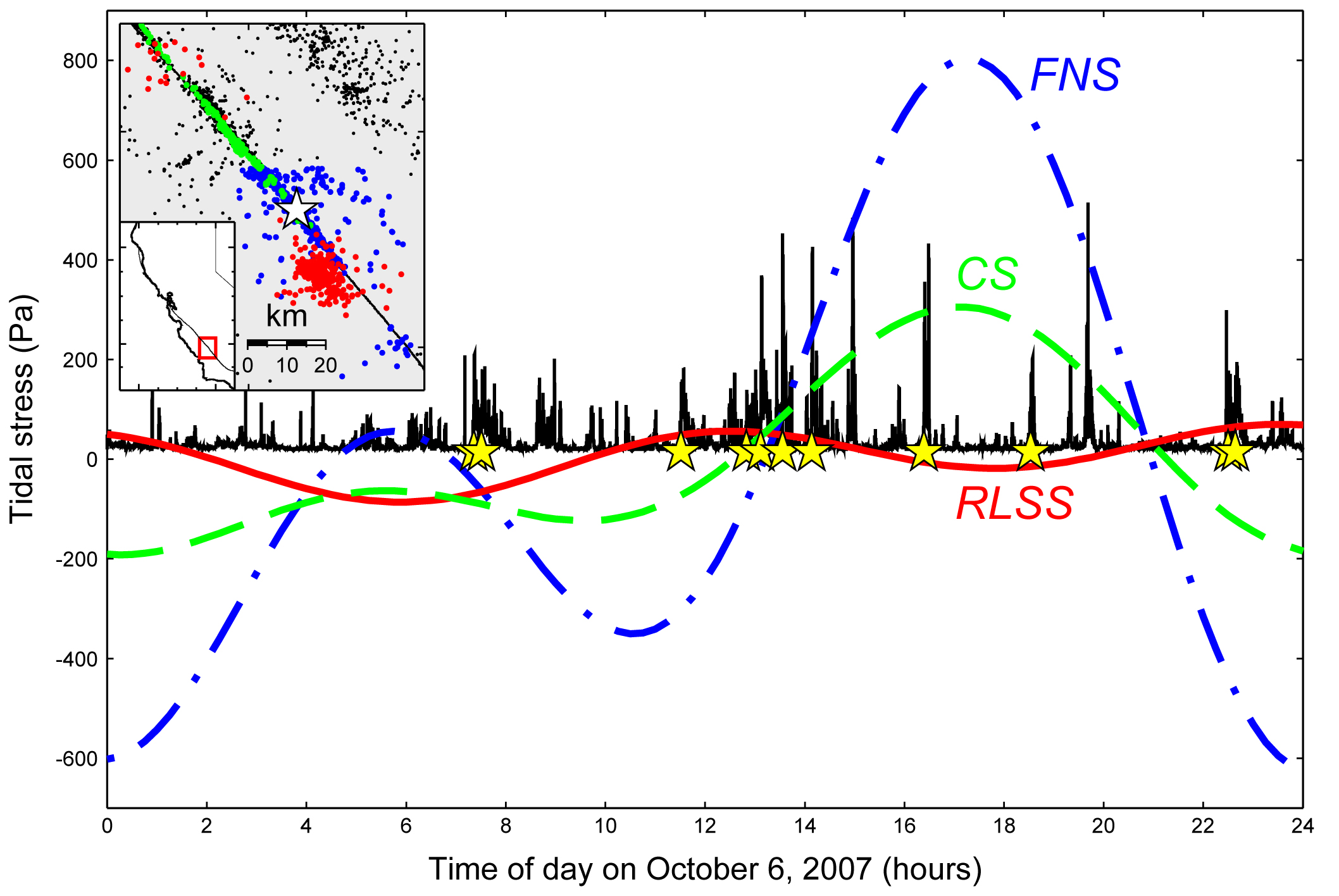
 |
|

Sample one day timeseries showing tidally-induced normal, shear, and Coulomb stresses, RMS envelope of seismic activity on that day, and tremor detections (yellow stars).
| Project Summary |
New observations of tidal triggering of non-volcanic tremor near Parkfield, CA present a uniqueopportunity to better understand the nature of tremor and the conditions under which it occurs. Here we perform a full tidal analysis to determine the stress orientations and magnitudes that favor tremor generation on the lower-crustal San Andreas fault. Our results show that extremely small shear stress perturbations primarily influence tremor activity levels while much larger normal stress fluctuations and stressing rates have little to no influence. These findings are indicative of near-lithostatic pore pressures in the deep San Andreas fault zone and suggest that low effective normal stresses explain the response of non-volcanic tremor to tidal forcing.
|
| Tools | SPOTL, statistics, rate-and-state friction |
| Geographic Location | Cholame and Monarch Peak, CA (near Parkfield) |
| Group Members Involved |
Amanda Thomas <Email> <Web Site> Bob Nadeau Roland Burgmann |
| Project Duration | June 2008 - April 2009 |
|
|